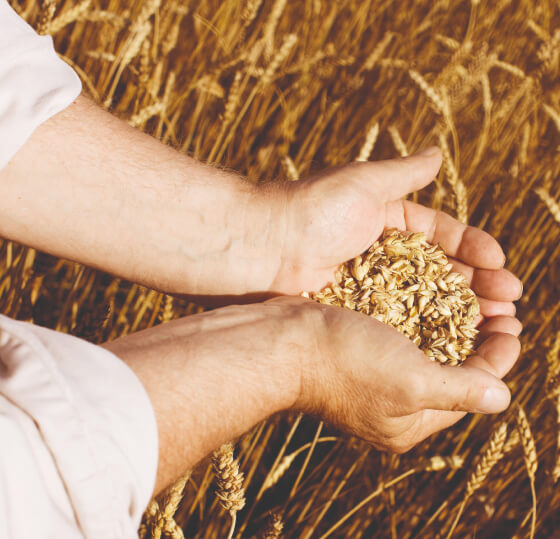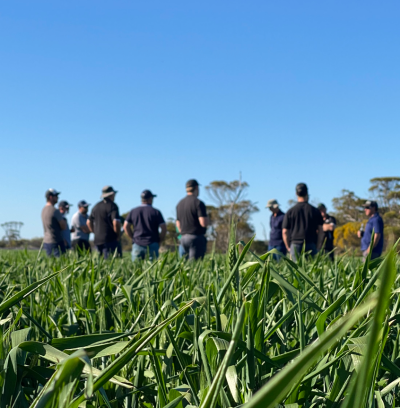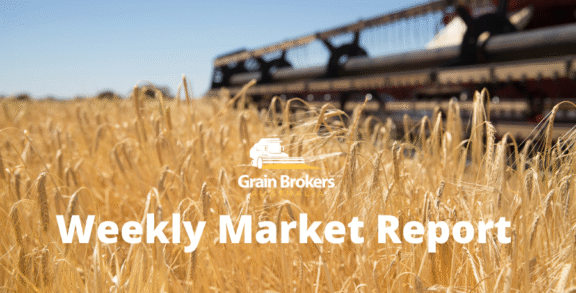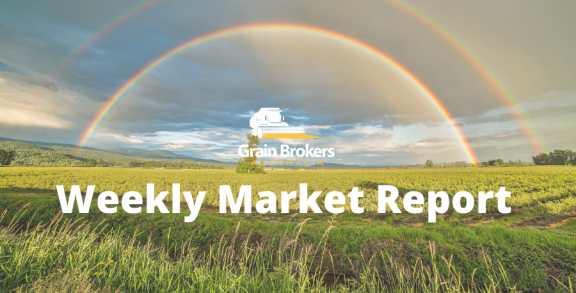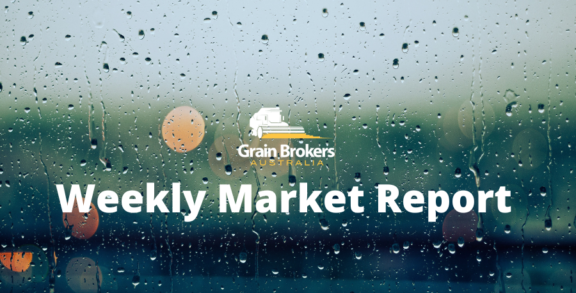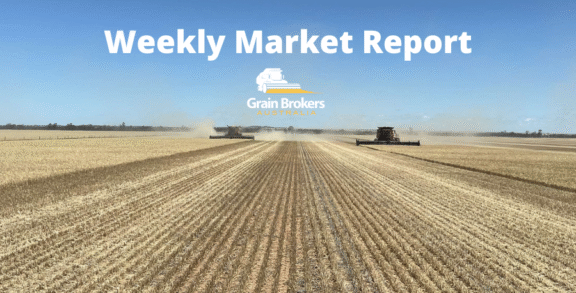
As the harvest of Ukraine’s winter and spring crops draws to a close, this season’s summer crop harvest campaign moves into gear, with unusually dry and hot weather conditions in many regions over the summer months negatively impacting production expectations for the 2025/26 season.
Favourable daytime temperatures, which minimised thermal stress during the grain fill and ripening stages, supported a positive yield outlook for winter and spring cereals in western and northern oblasts of Ukraine. However, significantly drier-than-usual conditions in June adversely affected the grain formation of winter crops in the central oblasts, and ongoing soil moisture deficits reinforced below-average yield expectations in southern and south-eastern regions.
Planting of Ukraine’s summer crop was hindered by a cold spell and above-average rainfall, which delayed field work, crop emergence and early plant development in many regions. More recently, many paddocks have been battling rainfall deficits, particularly in the eastern and southern oblasts, which have eroded yield potential. Conversely, the northern and western oblasts have profited from an adequate soil moisture profile, maintaining summer crop yield potential despite delayed development due to late sowing and emergence.
This season’s winter and spring crop harvest campaign commenced on time across most of the country, but excessive rainfall in July, particularly in the western parts of the country, delayed progress and led to quality downgrading for both cereal crops and rapeseed.
According to the latest data from the Ministry of Agrarian Policy, Ukraine’s farmers had harvested 7.1 million hectares of grain and legume crops as of September 18, which is 62 per cent of the 11.5 million hectares planted for the 2025/26 season. The harvested quantity stood at 29.8 million metric tonne, with an average yield of 4.2 metric tonne per hectare. This compares to the harvest of 31.9MMT of grain and legumes as of September 19 last year. This was off 7.5 million hectares, which was 68 per cent of the planted area, with an average yield of 4.24MT/ha.
With 98 per cent of the planted area harvested, Ukraine’s Ministry of Economy, Environment and Agriculture has wheat production at 22.2MMT off a tick over 5.0 million hectares for an average yield of 4.43MT/ha. The result is very similar to the 2024 crop of 22.4MMT.
The barley harvest is now completed, with the ministry currently calling production 5.3MMT off 1.35 million hectares, making the average yield 11.2 per cent less than wheat at 3.93MT/ha. This season’s total is 5.4 per cent less than the 2024 harvest of 5.6MMT.
Peas are the primary legume crop in Ukraine each year, and with the harvest now finished, production in the 2025/26 season stands at 612,000 metric tonne off 266,000 hectares for an average yield of 2.3MT/ha. The final result represents a 30 per cent year-on-year output increase from the 471,000 metric tonne reaped in 2024.
The harvest of this season’s corn crop has only just commenced, with 2.2 per cent of the planted area reaped as of last Thursday. The average yield currently stands at 4.31MT/ha, with almost 400,000 metric tonne in the bin off around 90,000 hectares. The harvest pace is quite slow at the moment, advancing by only 36,000 hectares in the week to September 18.
On the oilseed front, farmers have harvested around 36.5 per cent of the total area planted to sunflowers, rapeseed and soybeans. With harvest completed, the rapeseed area ended up higher than early season expectations at 1.27 million hectares, producing 3.3MMT and an average yield of 2.55MT/ha. Last season’s rapeseed harvest was 6.0 per cent higher at 3.5MMT.
The summer oilseed harvest is still in its infancy. As of September 18, it stood at around 26.7 per cent and 22.3 per cent of the area seeded to sunflowers and soybeans, respectively. Sunflower production stands at 2.4MMT off 1.37 million hectares, and the soybean harvest has covered 950,000 hectares for output of almost 500,000 metric tonne.
Enhanced remote sensing-based area analysis conducted by the European Commission in conjunction with the Kyiv Polytechnic Institute confirms the higher rapeseed acreage, particularly in the southern oblasts of Odessa and Mykolaiv. The assessment also points to slightly higher wheat and barley areas than initial estimates suggested. The area estimates and yield forecasts at the oblast level confirm the above-average wheat and rapeseed production results and the disappointing barley season at the national level.
Ukraine’s export pace since the 2025/26 marketing year commenced on July 1 is trailing that of 2024. The State Customs Service of Ukraine reports that 5.7MMT of grain and legumes had been shipped as of September 19, compared to 9.3MMT at the same time last year. September exports had reached 1.57MMT by last Friday, against 1.81MMT for the same period in 2024.
Wheat exports had reached 3.99MMT by the end of last week. This includes 1.34MT in September with the key destinations being Egypt, Indonesia, Yemen, Algeria and Vietnam. Barley exports had reached 770,000 metric tonne season-to-date, almost 200,000 of which are this month, with China and Libya the standout importers. Corn exports since July 1 stood at 906,000 metric tonne last Friday, with only 20,000 shipped this month.
Traditionally a major global supplier of rapeseed, Ukrainian shipments have essentially been halted this month due to a lack of clear government direction and procedure on the export documentation required to comply with the new 10 per cent export duty, which became effective on September 4.
According to the Ukrainian Agri Council (UAC), farmers are “unwilling” to pay the 10 per cent duty, traders are counting losses from vessels sitting idle at port, and domestic processors have taken advantage of the situation by lowering their purchase prices. There is reported to be at least 400,000 metric tonne of exports contracted for September shipment, with a further 200,000 metric tonne in October. Shipments of Ukrainian rapeseed from July 1 to early September totalled 640,000 metric tonne, the vast majority of which went to ports within the European Union.
Call your local Grain Brokers Australia representative on 1300 946 544 to discuss your grain marketing needs.
Written by Peter McMeekin.
